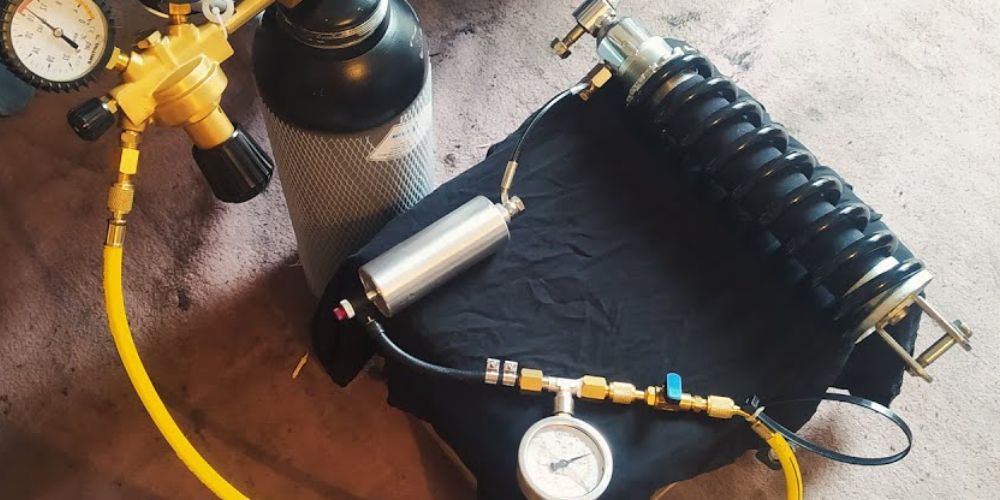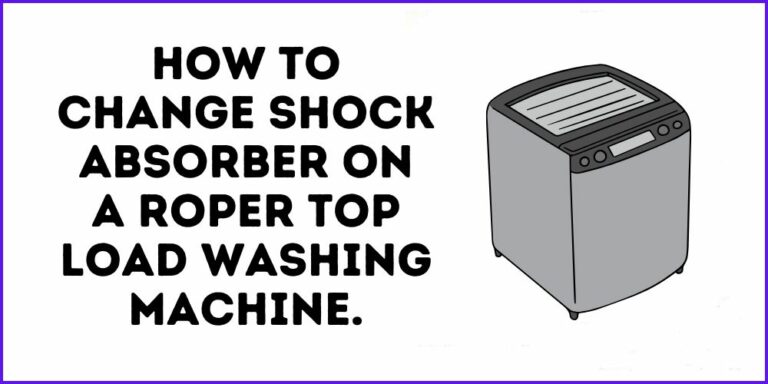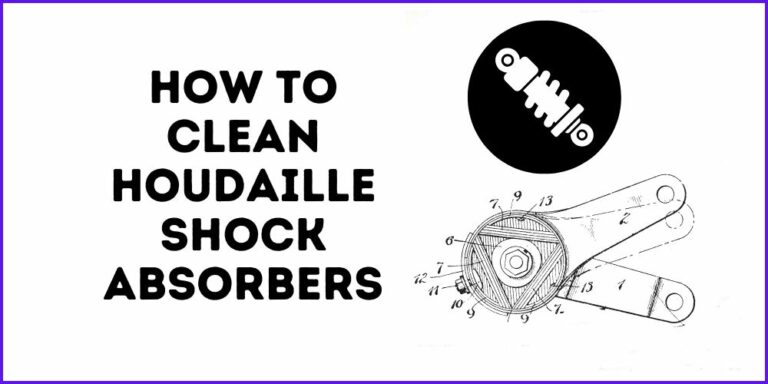Riding a dirt bike can be an exhilarating experience, but over time, the rear shock absorber may lose its effectiveness. If you notice your dirt bike’s suspension feeling weak or bottoming out more frequently, it might be time to recharge the rear shock.
In this article, we will guide you through restoring a rear shock on a dirt bike, ensuring optimal performance for your off-road adventures.
5 Signs of a Deflated Rear Shock
Excessive sagging of the rear end: If your bike’s back end sinks noticeably when you sit on it or during everyday riding, it indicates a lack of proper air pressure in the rear shock.
- Reduced suspension travel: A deflated rear shock may limit the suspension’s ability to absorb impacts and provide a smooth ride. You may experience decreased suspension travel, making the bike feel harsh over bumps.
- Bottoming out easily: When the rear shock lacks sufficient air pressure, it becomes more prone to bottoming out. It reaches maximum compression too quickly, causing a jarring impact and potentially compromising control.
- Uncomfortable and bumpy ride: A deflated rear shock cannot effectively dampen vibrations and bumps, resulting in a rough and awkward riding experience. You may feel every minor irregularity on the trail, leading to fatigue and reduced control.
- Unstable handling: Insufficient air pressure in the rear shock can negatively affect the bike’s overall stability and handling. The back end may feel unpredictable, causing the bike to sway or wobble in corners or over uneven terrain.
Preparing for Rear Shock Recharge
- Gather the necessary tools: You’ll need a few essential tools to recharge your rear shock. Gather a shock pump with a gauge, a nitrogen canister with a regulator, an Allen key set, and a clean cloth. These readily available tools will streamline the recharge process and ensure a successful outcome.
- Ensuring bike stability: Before proceeding, ensure your dirt bike is stable and secure. Place it on a motorcycle or center stand to keep it upright during the recharge. Stability is crucial to perform the procedure accurately and prevent accidents or damage.
How To Recharge A Rear Shock On A Dirt Bike

- Gather the necessary tools: You’ll need a few essential tools to recharge your rear shock. Gather a shock pump with a gauge, a nitrogen canister with a regulator, an Allen key set, and a clean cloth. These readily available tools will streamline the recharge process and ensure a successful outcome.
- Ensure bike stability: Before proceeding, ensure your dirt bike is stable and secure. Place it on a motorcycle or center stand to keep it upright during the recharge. Stability is crucial to perform the procedure accurately and prevent accidents or damage.
- Locating the rear shock valve: Locate the rear shock valve on your dirt bike. It is typically positioned near the top or bottom of the shock body. Consult your bike’s manual if you’re unsure about its exact location. Once you find the valve, remove any protective caps or covers.
- Release the air pressure: Using an Allen key, gently depress the valve core to remove any remaining air pressure from the rear shock. Pushing the valve core will allow the shock to deflate, preparing it for recharge thoroughly. Ensure you have a clean cloth to catch any escaping air or oil.
- Add Nitrogen gas: Now it’s time to add nitrogen gas to the rear shock. Connect the nitrogen canister to the regulator, ensuring it is securely attached. Slowly introduce the nitrogen gas into the shock by attaching the regulator to the valve. Avoid overpressurizing the shock, and refer to your bike’s manual for the recommended pressure specifications.
- Check for proper pressure: After adding the nitrogen gas, it’s essential to check the pressure to ensure it meets the manufacturer’s recommendations. Use the shock pump with a gauge to measure the pressure. Gently attach the pump to the valve and monitor the pressure reading on the indicator. Adjust the pressure as needed by adding or releasing nitrogen gas until you achieve the optimal pressure for your riding style and bike’s specifications.
How to Test the Recharged Rear Shock
- Reinstall the rear shock: With the rear shock successfully recharged, it’s time to reinstall it onto your dirt bike. Follow the reverse steps of removing the shock and carefully aligning it with the mounting points. Use the Allen key to secure the bolts and ensure the shock is tightly fastened.
- Adjust the sag: Once the rear shock is back in place, it’s important to adjust the sag. Sag refers to the amount the bike’s rear end compresses under the rider’s weight. Refer to your bike’s manual for specific instructions on properly adjusting the sag. Achieving the correct sag will optimize your bike’s performance and ensure a comfortable and controlled ride.
Final Words
Recharging a rear shock on a dirt bike is a fundamental aspect of suspension maintenance. By following the outlined steps, you can keep your bike’s rear shock in optimal condition, improving its performance and longevity.
Remember to prioritize safety and refer to your bike’s manual for specific instructions and recommended pressure settings.







